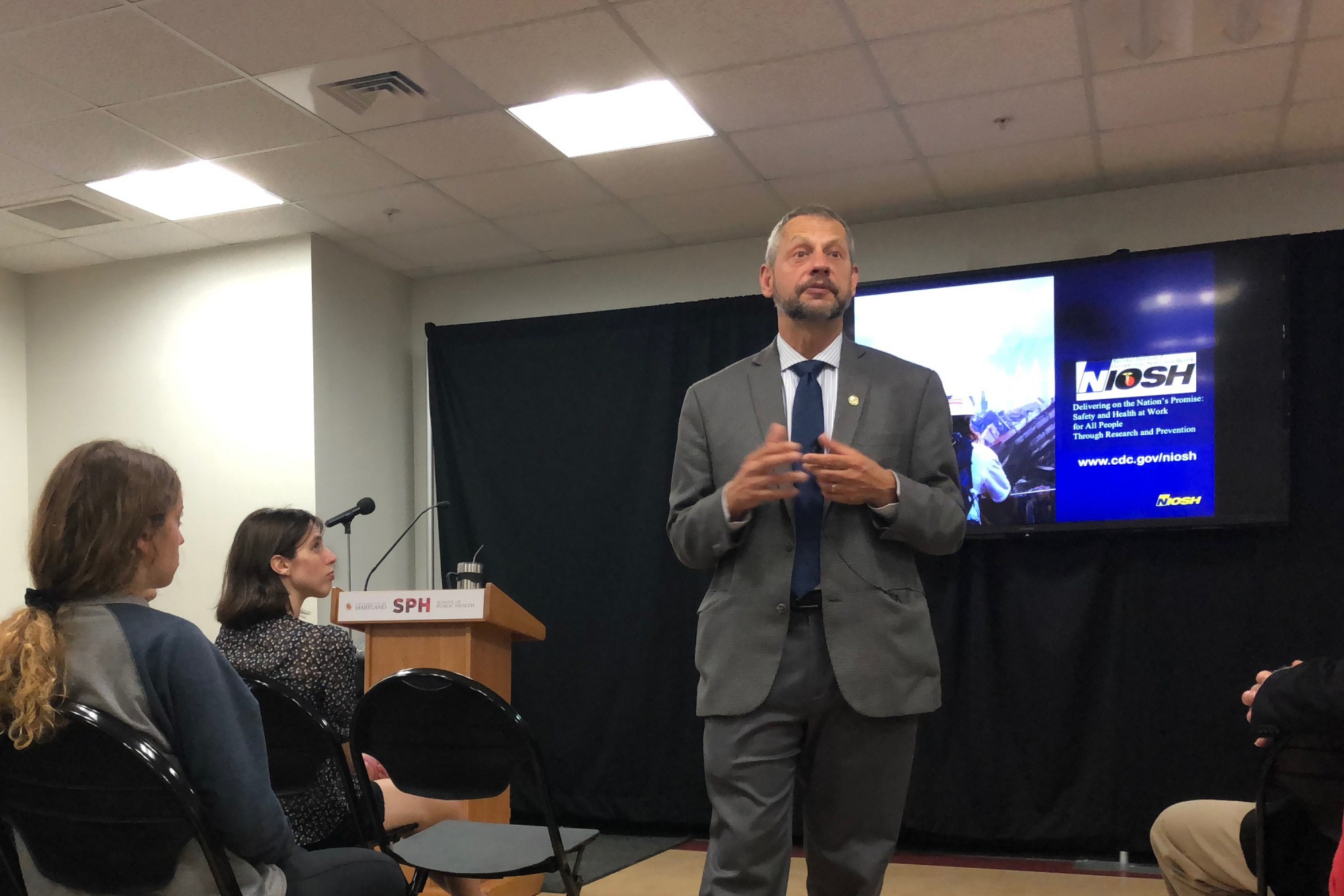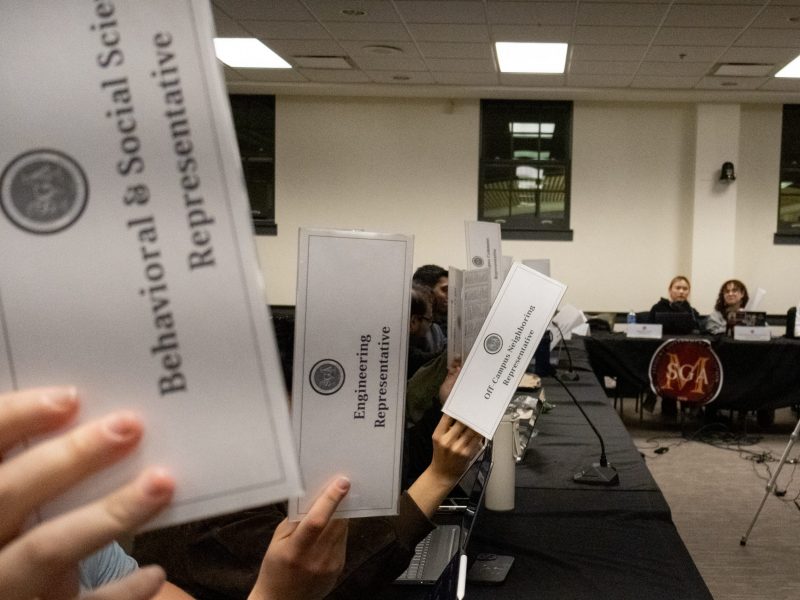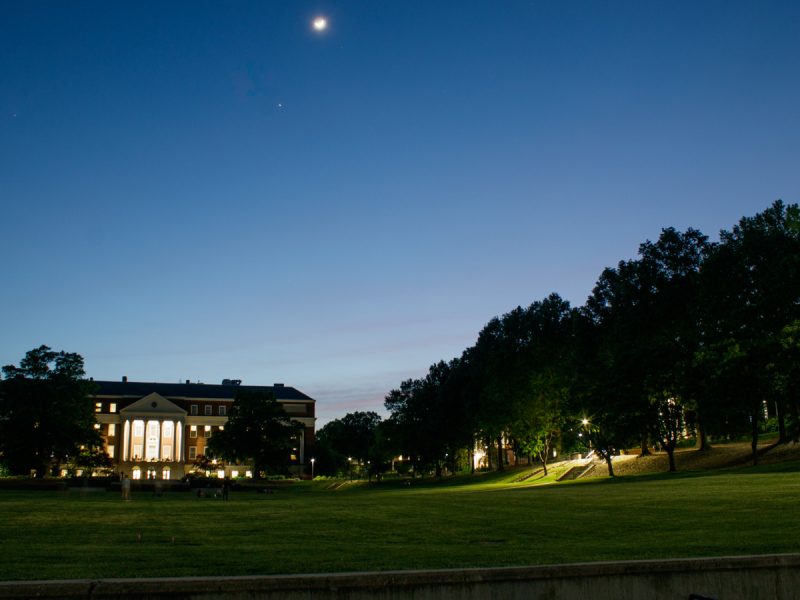When two commercial airliners crashed into the World Trade Center on Sept. 11, firefighters from across New York City rushed to the scene. Many were still inside the towers when they collapsed.
In the hours and days that followed, firefighters and other rescuers searched the rubble at ground zero for their fallen comrades. Boris Lushniak, who was working in the National Institute for Occupational Safety and Health at the time, aided their efforts, while trying to make sure they protected themselves as well.
As Lushniak — now the dean of the University of Maryland’s public health school — recounted in a talk on Tuesday, the wreckage created a major health risk for first responders and volunteers who were more concerned with saving those trapped in the debris.
“Firefighters would tell us, ‘Leave me alone, [protective equipment] is going to slow me down. I’m looking for my buddy, don’t you understand?'” Lushniak said before about 35 attendees in the School of Public Health. “Health and safety is very much on the backburner in those initial stages.”
[Read more: The public health school is expected to have five new classrooms by fall 2019]
In the days following the attacks, Lushniak assessed public and occupational health risks, such as exposure to asbestos and blood-borne pathogens, for first responders and volunteers assisting in search and rescue. He even helped sift through the rubble with buckets.
Lushniak called the experience surreal, having witnessed people work around the clock in all weather for weeks to search for remains of those who died.
In addition to the 343 firefighters who died in the World Trade Center collapse, 182 have died from illnesses related to their rescue efforts, according to ABC News. Those who have died since 9/11 have been added to the memorial wall of the fallen at the New York Fire Department headquarters.
Lushniak said he hadn’t lectured about his time at ground zero since joining this university’s faculty.
“Part of it is [living] through something there and it’s not altogether pleasant to think through what that you lived through, and so for me it’s [doing] it on special request,” Lushniak said.
[Read more: Prince George’s County delegate discusses gun control legislation at UMD panel]
Erin McClure, the public health school’s chief of staff, asked Lushniak if he would give the talk, and he agreed.
“I’m a dean now, and my role as dean is to tell stories about public health,” he said. “The more students in my view can hear the story of real life public health practice … then my role is to be that storyteller.”
Jera’lyne Hyland, an applied environmental health graduate student, attended the talk with her classmates. Lushniak was originally intended to be a guest speaker for Hyland’s class only, before the lecture was opened up to the public.
“I’m taking a class in exposure and occupational health, and this is definitely one of those topics that is most related to our lecture for the day,” Hyland said.
Aaisha Jamiluddin, a sophomore public health major, hoped to learn more about occupational health as it relates to public health studies. She said she’d never attended a seminar like this before Tuesday.
“I didn’t know that much about occupational health at all,” Jamiluddin said. “Occupational health in situations like these isn’t the first thing that comes to mind when you think about such disasters, but it really plays a reaIly important role in keeping everyone safe.”



